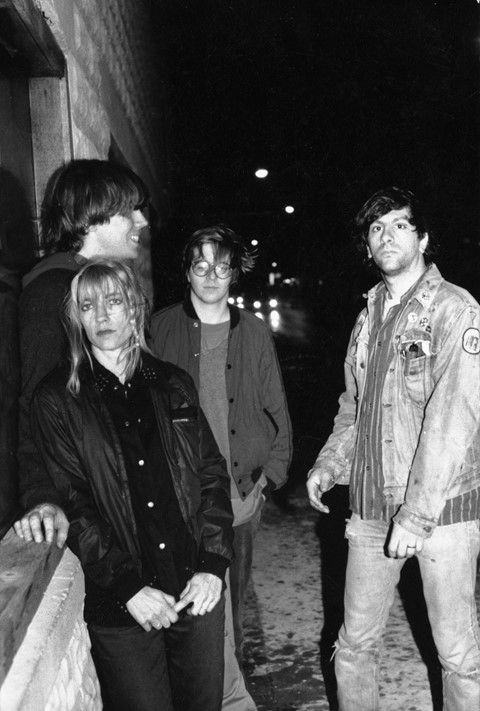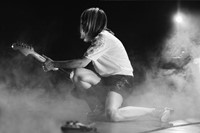The Sonic Youth frontwoman talks the glamour of 80s New York and her new memoirs
If there’s one question you should never ask Kim Gordon it’s “What’s it like to be a girl in a band?”, a question she reviles, and one which spawned the title for her newly published memoirs, Girl in a Band. But one could be forgiven for wondering – although her rise to fame as the bassist of iconic noise band Sonic Youth was preceded by that of a number of influential female rock musicians (Janis Joplin, Patti Smith, The Slits et al), being in a “proper” band in the 1980s was still almost unheard of as a woman. A fact she acknowledges in the book, writing, “In retrospect that was why I joined a band. So I could be inside that male dynamic, not staring in through a closed window but looking out.”
“I joined a band so I could be inside that male dynamic, not staring in through a closed window but looking out”
The book offers captivating insight into the life and mind of a figure who has never given much away, her aloof persona lending Gordon her timeless air of cool. We learn about her childhood in LA – about her sociologist father, her seamstress mother and her “brilliant, manipulative, sadistic” older brother Keller who was later diagnosed with paranoid schizophrenia. We head with Gordon to 80s New York (complete with tales of Richard Prince and Cindy Sherman), where she had hopes of becoming a visual artist.
Then of course there is her meeting with Thurston Moore, her husband for 27 years, and the Sonic Youth years that followed (filled with brilliant recollections of individual records and songs), right up until the turbulent, highly publicised end of her marriage and the subsequent split of the band in 2011. But for all the revelations, Gordon retains her cool credibility, her deep love of music and art infectiously resonating throughout the book, and making for a truly inspiring read. Here in celebration of the book’s release, Gordon talks female icons, Kurt Cobain and how she perceives herself.
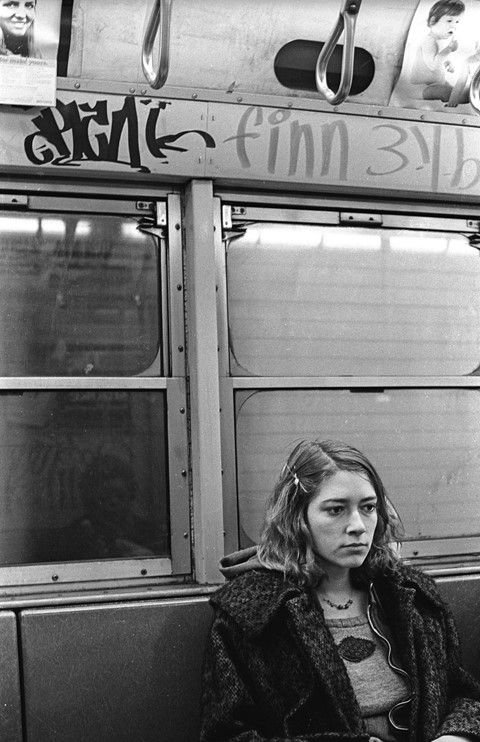
On writing the book…
“Writing the book was kind of a mixed bag; it was the challenge of doing a long term project that you can commit to. It was also daunting admitting, ‘this is who I am’. In your mind, you think of yourself in different ways and I gave myself quite a lot of allowance. I spent so much of my career not wanting to be labeled or pinned down so that was the most difficult thing.”
On growing up in LA…
“I think growing up in LA shaped me. There is a certain free-living aspect to growing up there, being able to ride your bike around in all kinds of weather. It’s always nice outside so you always play outside – we used to play in these dirt mounds that later became freeway off-ramps.”

On her cool, detached persona….
“My brother Keller was a larger-than-life personality. He was super verbal and extroverted – he was always expounding on things. And as much as I was influenced by what he was reading and what records he was listening to, it wasn’t until recently that I realised I was also influenced by how he would tease me; like, a fear of being humiliated or being made fun of because I was being emotional and that’s also a way of shaping somebody. I feel like so much of my personality was formed as a reaction to him and also trying to protect him, as I realised more and more that he was mentally ill and there was something wrong with him. I have another friend who’s a writer and he talked about how he feels like he has to be so perfect, and there for his mother, who was a single mother. He didn’t feel like he could really express all these different kind of emotions except for in his writing, and I can totally relate to that.”
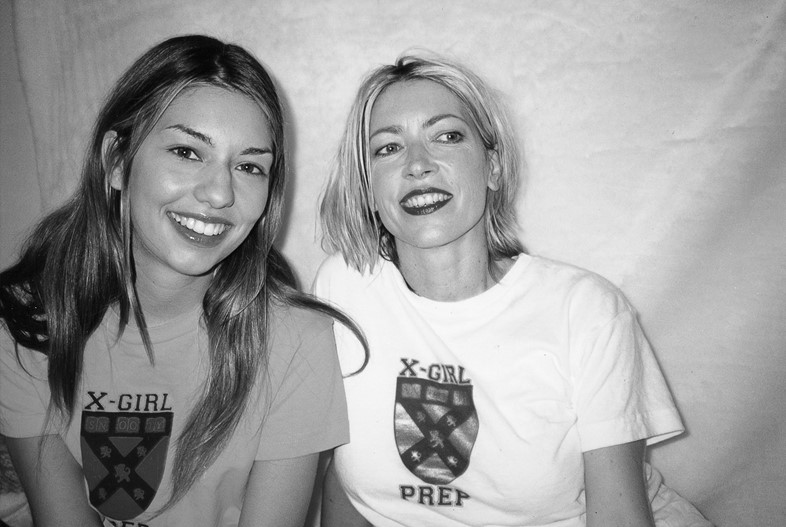
On how she sees herself…
“I see myself as a visual artist, that’s kind of how I locate where I am in the universe; what I’m interested in and how I look at things. I pretty much felt I was an outsider playing music. I mean, Sonic Youth was after punk, so ‘post punk’, but there was something that occurred around that movement that opened up an intervention in culture, something that hadn’t happened since the 60s that was very exciting – questioning authority is always exciting. And I think it pulled a lot of people into playing in bands that wouldn’t necessarily have ended up that way. So that was almost like an after image – me in New York playing music.”
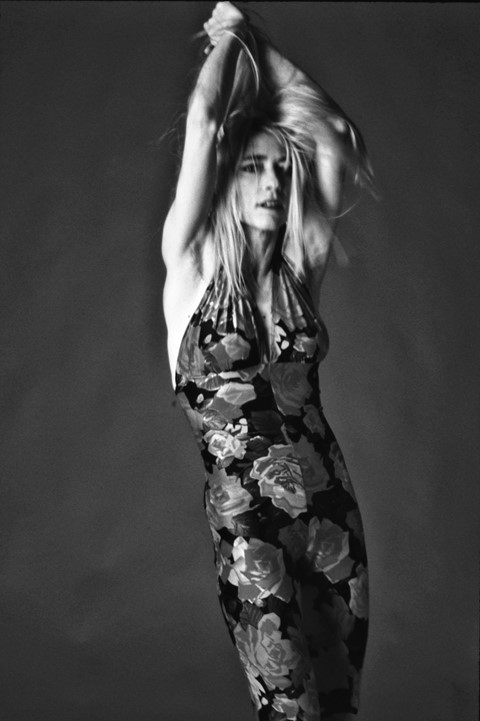
On moving to New York…
“When I first came to New York, I was really inspired by Andy Warhol, The Factory and The Velvet Underground. There was that whole history of New York and that was really exciting to a young person. Even if I maybe had a bit of cynicism about it, it was still the prevailing thing that attracted me to New York: the glamour.”
On her image…
“I knew I couldn’t achieve some kind of cool, stylised image, that just wasn’t me. But also, we were on the edges of the American hardcore and that was pretty anti rock star – still in the vain of what people thought punk rock was. It was a reaction to corporate style. So it was kind of just being yourself, you know walking on stage wearing a t-shirt.”
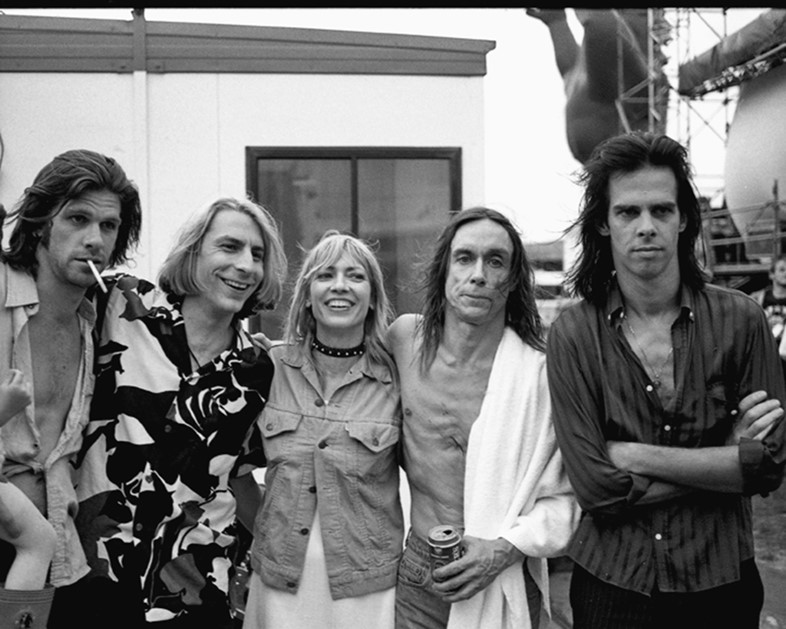
On Kurt Cobain…
“Kurt was really self-destructive. He went far beyond Pete Townsend smashing his guitar. He was pretty complicated. He could play really well, but he didn’t want to play well because that wasn’t punk rock. When I first met him he was talking about firing the drummer and the other guitar player and we were like ‘yeah, they’re kind of messy’, but we thought the songs were so good it didn’t matter but for him it was like, no. He was a perfectionist. He took it really hard on stage, to the point where you’re not sure what’s entertainment, what’s real? It was always an interesting situation, because it makes the audience wonder, what’s going on here?”
On influential female musicians…
“Initially I was really inspired by The Slits and The Raincoats, and Siouxsie Sioux, Patti Smith. Then there was The Runaways, Janis Joplin, Tina Turner – who is the ultimate performer – and Billie Holliday. And more recently people like Catherine Ribeiro, who’s a French singer.”
Girl in a Band by Kim Gordon is published by Faber & Faber and is available now.
